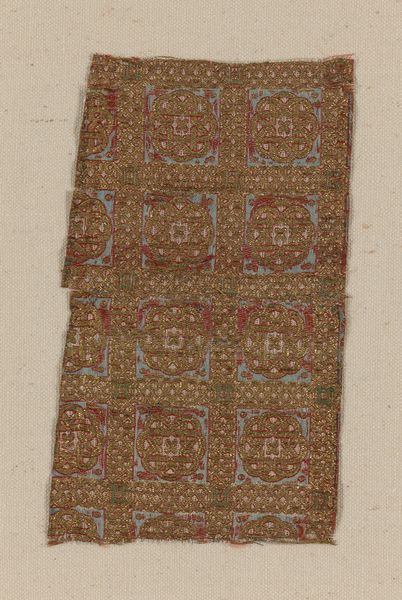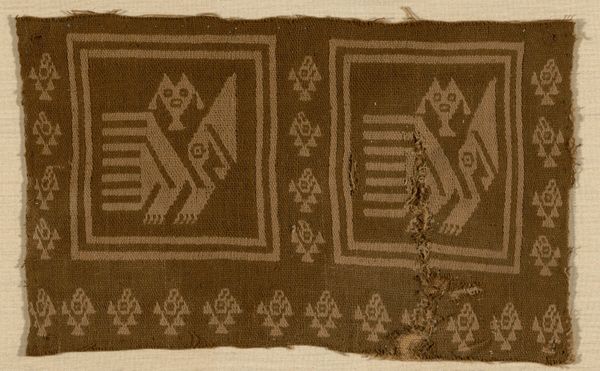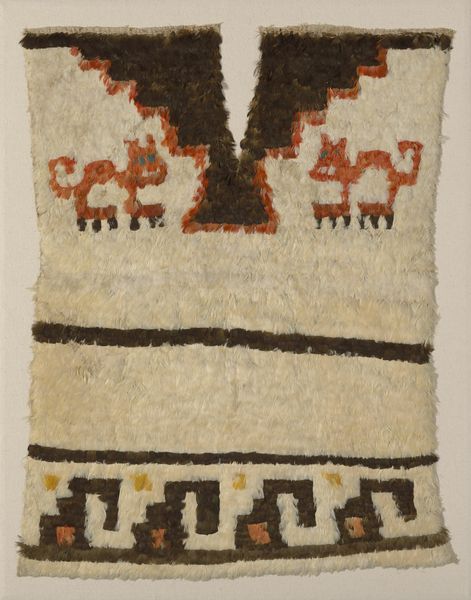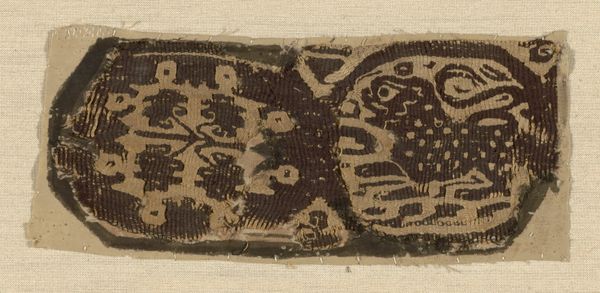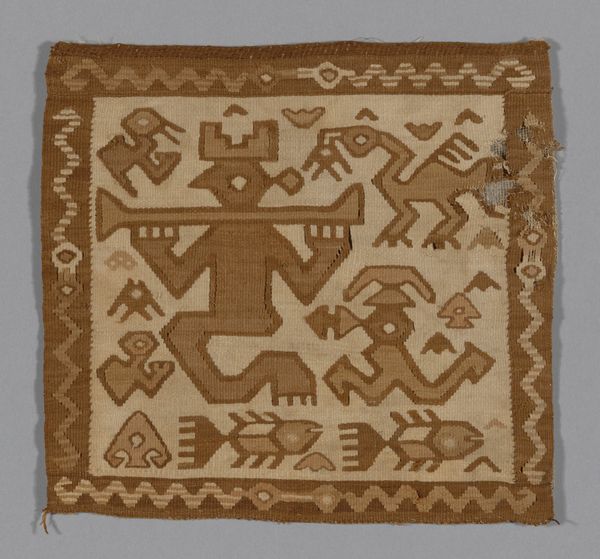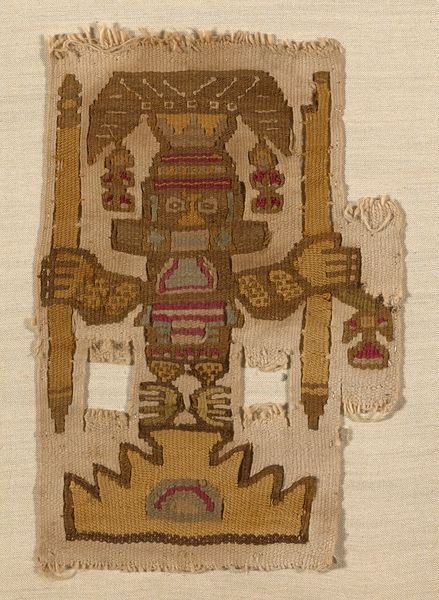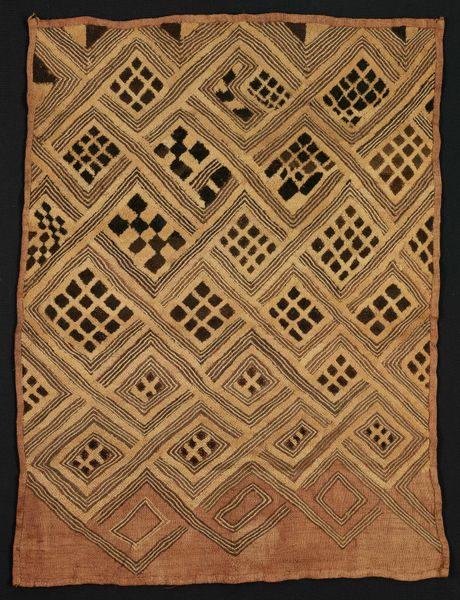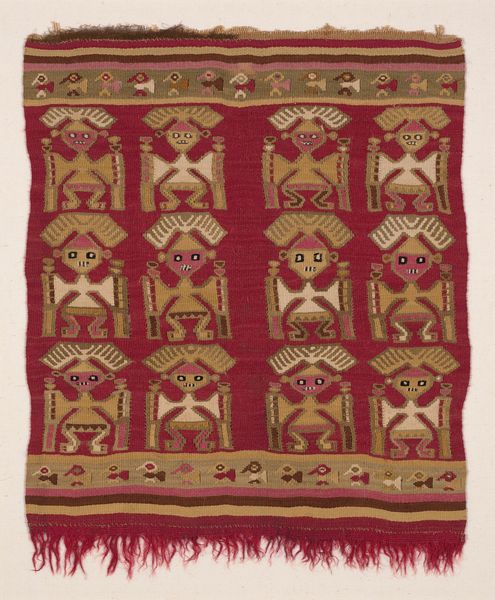
weaving, textile
#
pattern
#
weaving
#
textile
#
figuration
#
geometric
#
indigenous-americas
Dimensions: 33 × 13.3 cm (13 × 5 1/4 in.)
Copyright: Public Domain
This woven fragment, made by the Chancay people, offers a glimpse into the art and symbolism of pre-Columbian Peru. The Chancay civilization, which flourished from around 1000 to 1450 AD near modern-day Lima, were known for their textiles, often found in burial sites. The fragment displays a striking contrast between light and dark panels, populated by stylized animal figures. Notice the repeated motifs of birds, and feline-like creatures. These are not mere decorations. Animals held significant symbolic meaning, often associated with power, fertility, or the connection between the earthly and spiritual realms. Weaving was a deeply gendered practice, primarily done by women, and the creation of such textiles was not only an artistic act but also a social and spiritual one. Consider how this fragment, once part of a larger textile, embodies a complex interplay of artistic expression, gender roles, and cultural beliefs. It serves as a powerful reminder of the sophisticated societies that thrived in the Americas long before European contact.
Comments
No comments
Be the first to comment and join the conversation on the ultimate creative platform.

